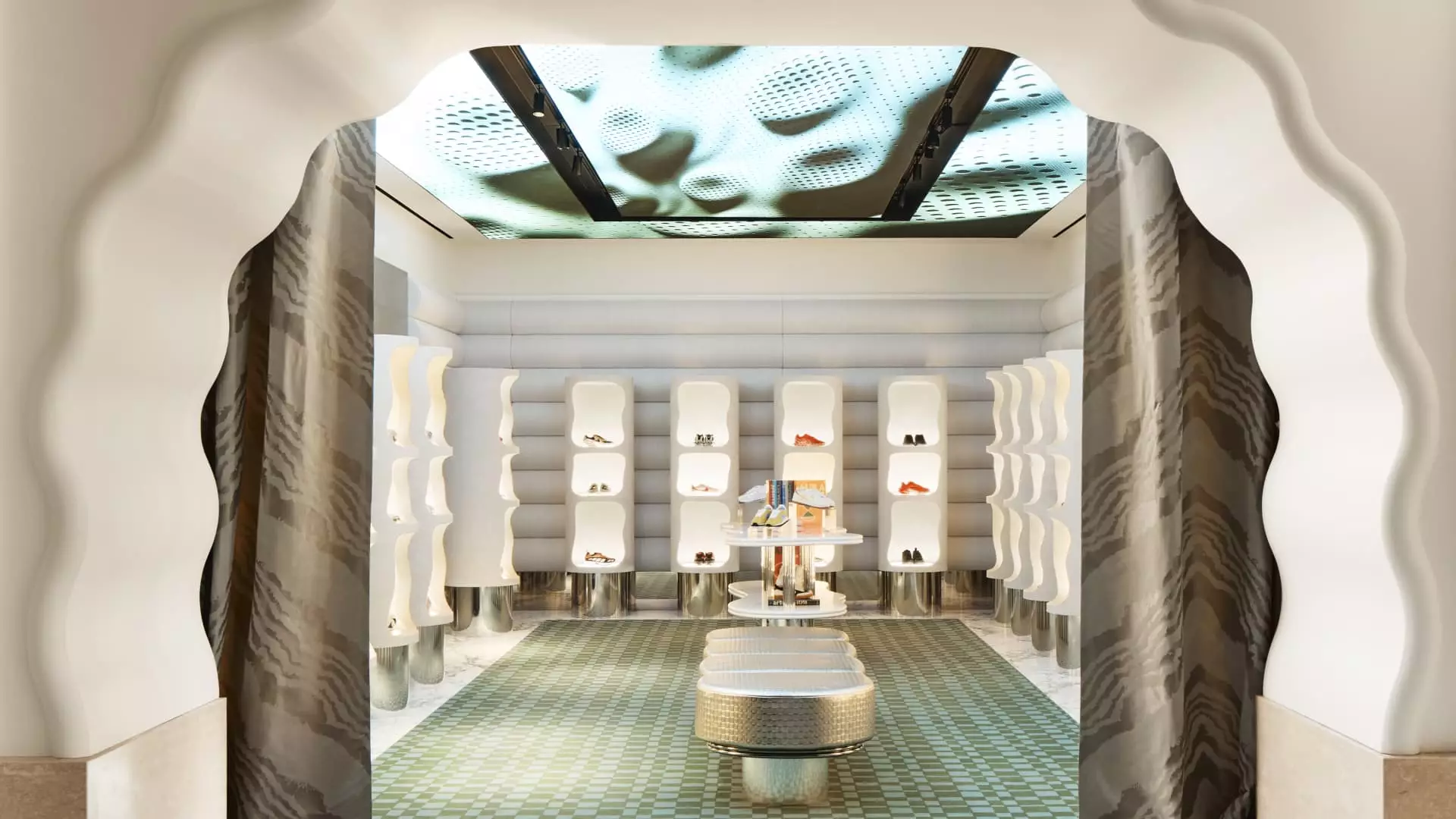Paris has long been synonymous with luxury, elegance, and style—qualities that Printemps aims to bring to New York City with its recent opening in the Financial District. As the first U.S. location for the storied French retailer, Printemps arrives amid a changing luxury landscape. The timing is peculiar, given the socio-economic stagnation affecting luxury markets globally, particularly in the wake of inflation and shifting consumer priorities. Yet, there’s an undeniable allure in the store’s grand introduction, which embodies a brave interplay between classic luxury and modern-day shopping experiences.
Experiential Luxury: A Shift in Focus
Printemps is not just introducing a shopping venue; it is unveiling an experience. Spanning 55,000 square feet across two levels, the store’s design is reminiscent of a Parisian apartment, bringing an element of home into the retail space. A captivating example is the so-called “shoe forest” in the Red Room, an intricate homage to Art Deco style, where shoppers can explore footwear while enjoying a glass of wine. Such initiatives position Printemps as an innovator in experiential luxury, setting itself apart from traditional luxury retail spaces that have remained static in their approach.
The integration of a fine dining restaurant helmed by a prestigious chef points to a greater trend in luxury retail—merging shopping with culinary experiences. By inviting Americans to indulge in a café serving French pastries while surrounded by high-end fashion, Printemps eschews the transactional nature of shopping for a delightful journey. The significance of this experiential focus cannot be overstated; attendees are no longer merely shoppers but participants in a curated lifestyle.
Attention to Detail: The Printemps Promise
In an age of high expectations, Printemps commits to a customer-first philosophy echoed throughout its service offerings. With 25% of its brands either rare or unavailable in the U.S., Printemps caters not just to luxury aficionados but also to consumers hungry for unique finds. Those exclusives enrich the shopping narrative, inviting curiosity and encouraging impulse purchases from tourists and locals alike. The collaboration with luxury brands like Joseph Duclos, which has adorned celebrities such as Taylor Swift, speaks volumes about the retailer’s intentions to cultivate a discerning clientele.
However, this foray into the American market is not without its challenges. The ongoing economic uncertainties, particularly inflation and hesitancy among even the most affluent consumers, cast a shadow over Printemps’ ambitious venture. Will the store thrive when wealth is becoming more concentrated, and discretionary spending increasingly calculated? The sentiments from consulting firm Kearney suggest that while the luxury market isn’t booming, it still retains enormous potential in America. Printemps needs not only to attract keen buyers but also to create loyalty amid diverse economic conditions.
Redefining the Luxury Experience
Printemps’ leadership understands that mere product offering isn’t enough. It is the experience that will ultimately seal the deal; a point reiterated by Brian Ehrig, a partner at Kearney. Luxury spending is no longer a matter of just purchasing an item; it’s intertwined with the personal touch of high-quality service that cannot be replicated online. Consumers yearn to feel valued, and for luxury retailers that prioritize personalized experiences, the payoffs can be significant.
While traditional stores emphasize status, Printemps is constructing an environment where shoppers feel more like cherished guests than mere customers. This strategic pivot appeals particularly to millennials and Generation Z, who appreciate brands that prioritize experiences over materialism. Printemps seems to be dismantling the old luxury mold, embracing a new form of affluence that centers around emotional engagement.
Consumer Resilience: A Silver Lining?
Despite modest growth projections for luxury markets, particularly in light of the pullback from wealthier consumers, experts still find the American market intriguing. As Ehrig points out, the resilience of American consumers remains a beacon of hope. Luxury brands still have a foothold in this market because Americans love shopping; they find joy and connection within the retail spaces. Printemps, with its charm and allure, seems well-prepared to tap into this consumer enthusiasm.
But can a store genuinely redefine luxury when the very fabric of consumer culture is shifting? As Printemps paves its way in New York, it must do so with an awareness of its surrounding environment, remaining adaptable to ever-changing consumer preferences and economic realities.
The Bigger Picture: Luxury in Crisis?
The opulence associated with luxury shopping is increasingly being challenged by critical conversations around sustainability, ethical consumption, and economic disparity. As Printemps steps into the limelight, it must also grapple with these dimensions of modern retail. Navigating the delicate balance between exclusivity and responsibility will be paramount for securing its standing in the competitive landscape.
In closing, Printemps’ emergence on the New York retail scene isn’t just a significant milestone for the brand; it may well redefine the luxury retail framework itself, accounting for evolving consumer expectations and the socio-economic context of 2024. The store’s success could serve as a pivotal example for other luxury retailers looking to evolve and thrive amid transitioning marketplaces, ultimately redefining what “luxury” truly means in today’s world.

